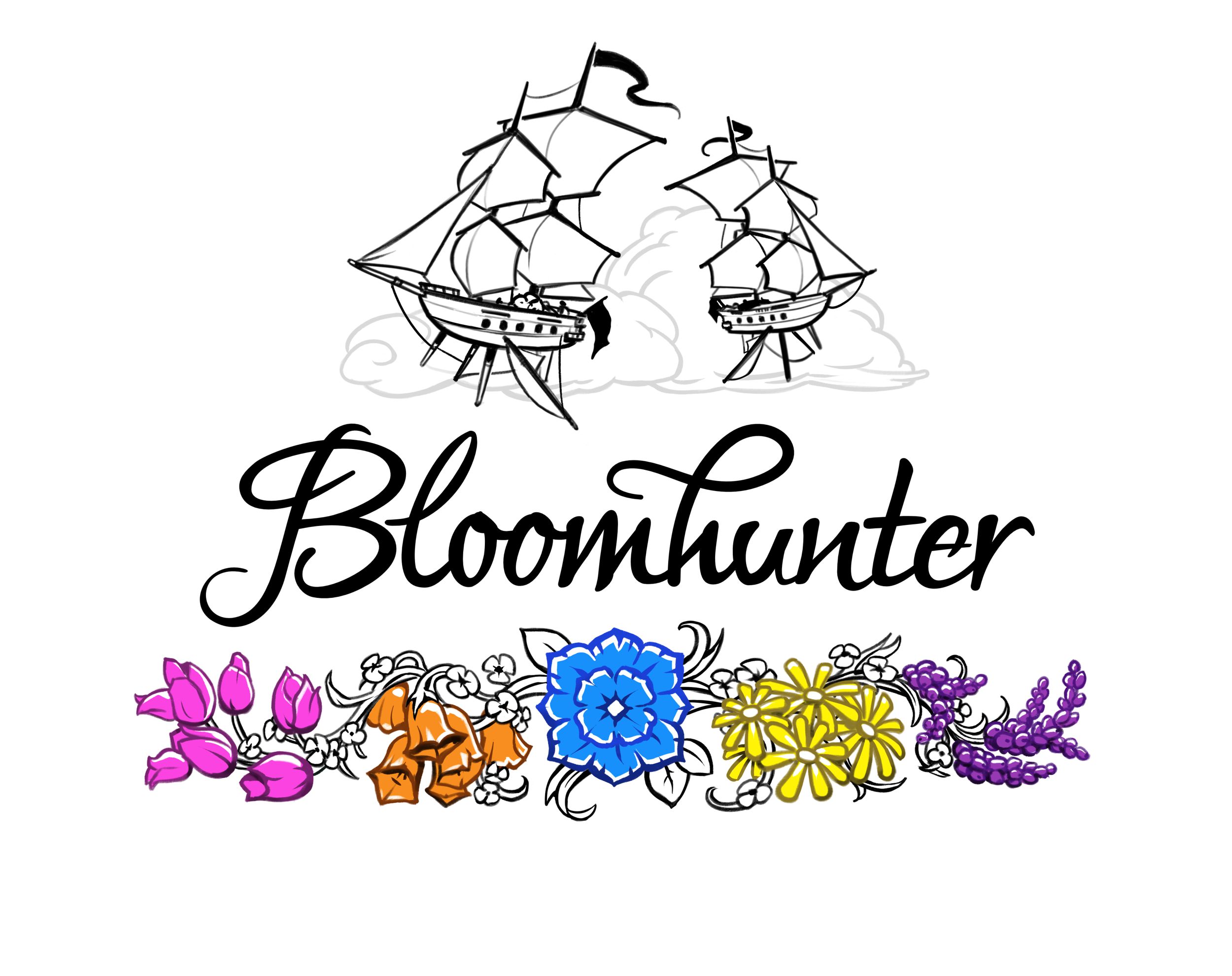Bloomhunter is a theme-first game. We created the idea first, inspired by an image I couldn’t get out of my head: airships that resembled tall ships from the golden age of sail, gliding into port with every rail and line bursting with colorful flowers. These ships, I decided, scoured the islands of the Greensea in search of rare flowers to adorn great festivals. Delivering rare flowers in high demand, or returning with a hitherto unknown bloom, can win you prestige for life.
The people of the archipelago refer to both the ships and the captains as “bloomhunters,” a word that drips with connotation. As an insult, it means a bounder with their head in the clouds, far too flighty for honest work. As praise, it describes one who knows what is best in life: a loyal crew, the wind in your hair, and the determination to suck the marrow out of every last day.
But where did this fanciful image take root? It all started with a project I began in the summer of 2021, during my first residency at the Stonecoast MFA program at the University of Southern Maine. Covid forced the 10-day residency online, so I attended from a rented room near the mouth of the Columbia in southwestern Washington. One day, I went to a lecture on space opera by sci-fi/fantasy writer Tobias Buckell, who you may know as the author of one of the few Halo tie-in novels that’s actually quite good (The Cole Protocol). His descriptions of “planets sliding by like drops of water on a window” entranced me, but I tripped over a problem I’ve always had with the space opera genre: why do the planets always feel so small?
To me, it’s because creating believably massive worlds is hard. It’s nearly impossible to do more than once in the same work. We accept that planets in Star Wars and Star Trek feel a bit limited because it’s the wages of the genre. But what if we could shift the context so smaller societies and landscapes make more sense?
For example, instead of planets, what about islands?
That idea combined extremely well with my obsession with flying boats, and from there, I was off and running. From the beginning, I built the Greensea around “the three Vs”: Variety, Vitality, and Verticality.
- Variety: The world takes inspiration from as many sources as possible. To build different islands, I’ve grabbed from historical eras and cultures, fantasy concepts, mythological and religious stories, and my favorite landscapes. Early on, I decided there would be no one “magic system” — instead, each island would have its own local miracle, bestowed by a deity inextricable from its particular land. Since the ocean is infinite, and new islands are appearing all the time, there’s basically no limit to the ideas that can fit in the Greensea (and therefore, future content for Bloomhunter, but I’m getting ahead of myself).
- Vitality: I’ve started to get sick of fantasy settings being on a long slide down from a golden age. All right, there’s beauty and mystery to be found in the remnants of faded grandeur, but for once I wanted to actually see the golden age. They always make it sound so cool! In the Greensea, we’ve got a world in the prime of its history, a place where adventure, mystery, and danger flow through the cracks between peace and prosperity.
- Verticality: The more variation in height, the better the view; that’s just common sense. There’s a reason lakes in British Columbia draw more visitors than ones in Nebraska. In the Greensea, some islands float miles in the air, some drift on the current, and some stay rooted while towering to icy heights. Airships ply the skies, and the three moons of Hunter, Lord, and Prophet — backed by the mysterious aurora known as the “tradewinds” — draw the people’s eyes upward.
What I ultimately came up with was a land which served as a graveyard for gods from other worlds. Each time a god dies, its body falls to the Greensea, where it forms an island reflecting who the deity was in life — sort of a metaphysical whalefall. When a ruler of gods falls, it creates an axis mundi, which attracts warm weather, favorable winds, and (some say) history itself. At the heart of the Greensea is Ash Aris, the axis of the known world, which hosts the extraordinary flower festivals that keep the bloomhunters in business.
So far, so good. But how does all of this translate into a board game? Well, that’s a saga for another post. Probably several — spoiler alert, but we did not get it right the first time, or the second. Stay tuned!

No responses yet